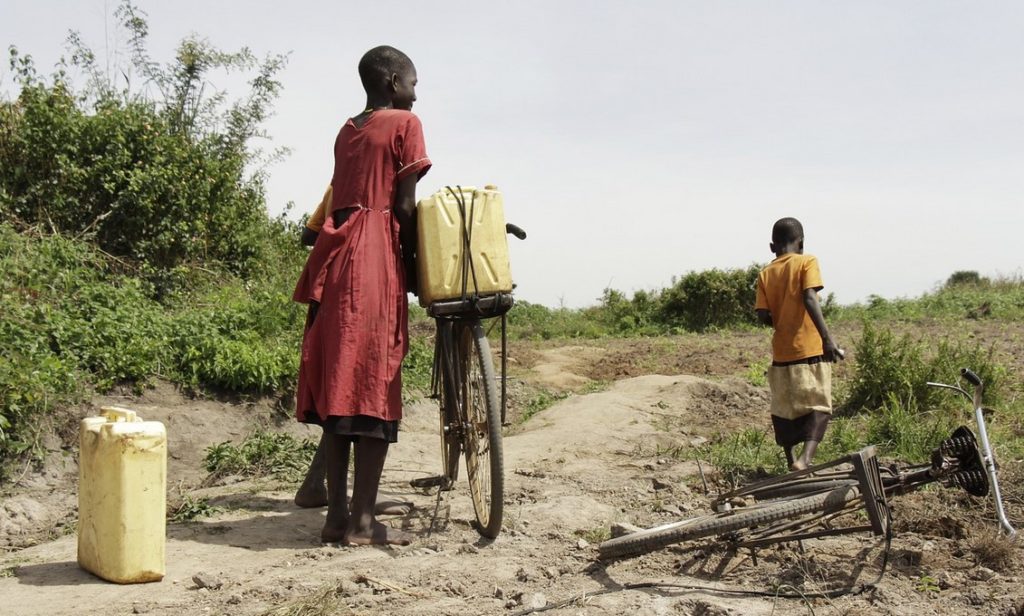Kenya is currently experiencing a major drought; and with a massive humanitarian catastrophe looming, as well as hundreds of elephants, wildebeests and zebras dead, the situation is serious. The UN’s World Meteorological Organization said the drought is the region’s longest in four decades. The WMO also notes that the October to December season contributes up to 70% of the annual total rainfall in the equatorial parts of the Greater Horn of Africa, particularly in eastern Kenya. Without this crucial rainfall during these months, the effect is devastating. The drought has left some 18 million people affected by food shortages in Somalia, Ethiopia and Kenya, according to reports from the World Food Programme.
The UN has highlighted the urgency of the situation as Somalia, Djibouti, and Ethiopia are also under threat. According to the UN, in some areas of Kenya, over 90 per cent of water sources have dried up and, as crops fail, and families lose their livestock – which, for many, is their only source of income – more than four million people are grappling with acute hunger. An estimated 134,000 women are currently pregnant or breastfeeding in drought-affected regions of Kenya; many are now malnourished and anaemic, conditions which can be life-threatening.
Furthermore, the rainfall deficits are likely to extend to parts of Eritrea, most of Uganda and also Tanzania as the start of the rainy season is likely to be delayed across much of the eastern parts of the region, according to an estimate by the WMO’s regional climate centre for East Africa, the Inter-Governmental Authority on Development (IGAD) Climate Prediction and Applications Centre (ICPAC).
This dim reality is only expected to get worse if governments in the region as well as the international community do not take immediate action. With so many millions of men, women, and children already suffering from malnutrition and now at risk of a full-blown famine, the crisis is urgent.
Currently, the UN is calling for $320 million to support more than four million people in dire need of assistance through a joint drought appeal.
The government in Kenya has allocated 2 billion Kenyan shillings ($16.4 million) for food relief to more than 4 million people affected by the severe drought.
“We are working with development partners to raise another 10 billion shillings ($82.3million) to ensure no part of the country is unfairly affected by drought,” President William Ruto said.
Kenya’s National Drought Management Authority highlighted recently the story of one woman, Batula Mohamed, a resident of Karu Location in Habaswein, Wajir County, who was on “the verge of despair as she watched the body condition of her cattle deteriorate. Drought had depleted all available pasture, wreaking havoc in her village. The mother of five had already lost four cows in a span of two months and the remaining three were too feeble to stand on their own.” The area in which she lives “had not received any rainfall in five months thus the depletion of pasture. Her three school-going children had missed most of previous terms work as the situation required them to venture farther out with the livestock in search of pasture.”
In addition to these astounding and difficult circumstances, it is often the women and girls who are required to walk great distances to fetch fresh water. Many villagers need to walk anywhere between two to seven kilometers to access fresh water. For those of us living in western countries with easy access to basic amenities such as water, this type of hardship is simply unimaginable. On top of this lies the danger women and girls face from men who loiter around the vicinity of wells, hoping to prey on them.
With such danger and devastation, Kenya is in dire need of assistance.
The International Committee of the Red Cross (ICRC) has targeted its drought response to the coastal and north-eastern counties, where impact of the drought is compounded by insecurity and challenging access to the communities. To ground its response at the community level, the ICRC works in partnership with the Kenya Red Cross Society (KRCS), which has presence in the communities, and engages with affected people and coordinates with local authorities.
The two organizations work to provide food support, livestock assistance, livelihood support and access to water, rehabilitation of water points, and community engagement.
But this assistance has only reached some tens of thousands of people in need – far below the real number of people who desperately require access to food and water.
While some experts believe climate change is to blame, it is still unclear just how much the drought can be blamed for deforestation, the growing water demand and land degradation – all caused by humans.
What is clear is that the citizens of Somalia, Djibouti, Ethiopia and Kenya are all in dire need of assistance and their own countries as well as the international community must band together to ensure the continued assistance to the men, women, and children in need. Otherwise, this crisis will truly become a humanitarian catastrophe.
Image: Pixabay
Become a Patron!
Or support us at SubscribeStar
Donate cryptocurrency HERE
Subscribe to Activist Post for truth, peace, and freedom news. Follow us on SoMee, Telegram, HIVE, Flote, Minds, MeWe, Twitter, Gab, What Really Happened and GETTR.
Provide, Protect and Profit from what’s coming! Get a free issue of Counter Markets today.


Be the first to comment on "Kenya’s Drought Could Become a Humanitarian Catastrophe"